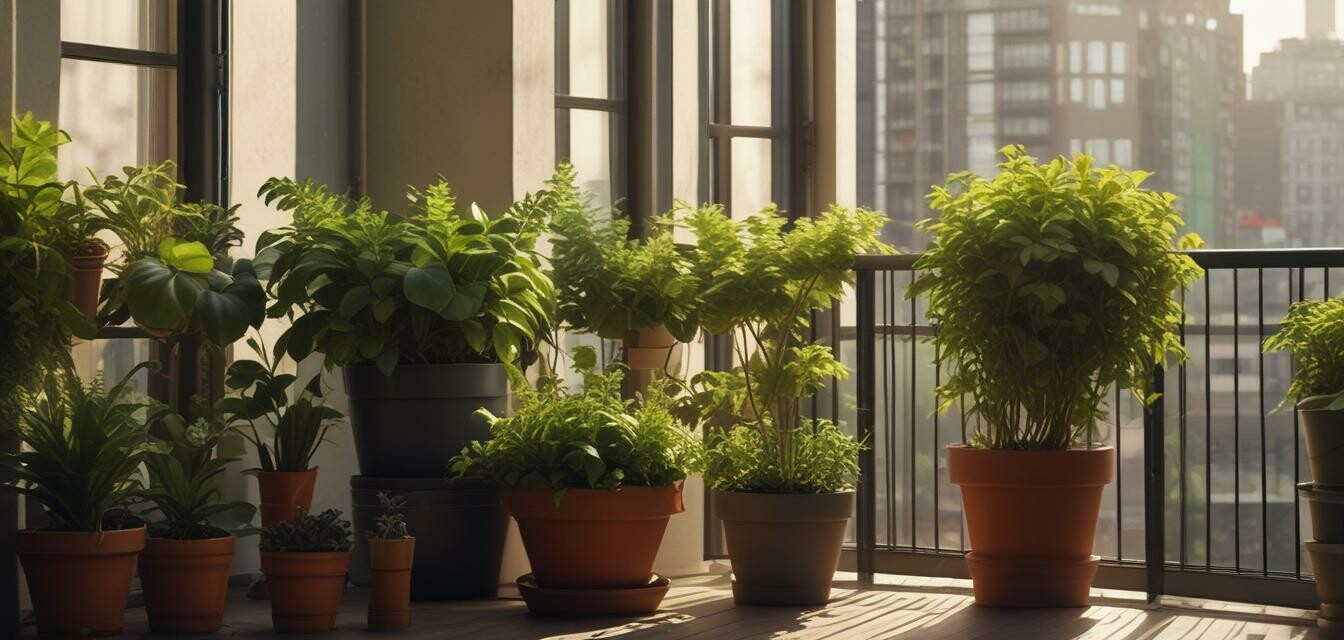
Adapting Your Houseplants to Environmental Changes
- Understand how to identify environmental changes.
- Adapt houseplants through proper care and maintenance.
- Implement strategies for optimal sunlight, watering, and temperature.
- Utilize balcony accessories to enhance plant health.
- Know the signs of stress in houseplants and how to address them.
Urban gardening, particularly on balconies, presents unique challenges and opportunities for houseplants. As environmental conditions fluctuate, it's vital for plant care enthusiasts to know how to help their houseplants adapt effectively. With practical tips and strategies, you can create a thriving oasis right outside your apartment window, even in changing conditions.
Understanding environmental changes
Environmental changes can come from various sources such as weather fluctuations, seasonal transitions, or structural modifications in your building. Here are some common factors affecting your balcony garden:
| Environmental Factor | Description |
|---|---|
| Sunlight Exposure | Shifts in available sunlight due to changing seasons or nearby constructions. |
| Temperature Changes | Extremes in temperature during winter or summer months. |
| Humidity Levels | Fluctuating humidity levels caused by weather or location within the city. |
| Air Quality | Increased pollution or changes in air circulation can impact plant health. |
Tips for adapting houseplants
Here are some actionable tips to help your houseplants adapt to changing environmental conditions:
1. Monitor sunlight exposure
Different plants require varying amounts of sunlight. Regularly assess how much light your plants receive throughout the day and adjust their placement as needed. Consider using reflective surfaces to increase light exposure.
2. Adjust watering practices
Changes in temperature and humidity will affect how much water your plants need. Always check the soil moisture before watering and ensure proper drainage to avoid root rot. Here’s how you can determine when to water:
- Stick your finger about an inch into the soil;
- If it feels dry, it’s time to water;
- If still moist, wait a few more days.
3. Optimize temperature control
During extreme weather, provide a buffer. For instance, bring sensitive plants indoors during colder nights or cover them when excessive heat is expected. Invest in gardening tools for balconies to monitor temperatures. Check out tools on our Gardening Tools for Balconies page.
4. Maintain ideal humidity levels
Houseplants typically prefer humidity levels above 50%. Increase humidity by placing trays filled with water and pebbles beneath your plants, or consider grouping plants together to create a microclimate.
5. Watch for signs of stress
Regularly check for symptoms indicating that your houseplants might be struggling, such as leaves yellowing or drooping. Address these issues promptly to ensure your plants thrive in adverse conditions.
Pros
- Enhances plant health and growth.
- Improves air quality inside your home.
- Creates a beautiful outdoor space.
Cons
- Requires consistent effort and observation.
- Potential for increased pests if not monitored.
Utilizing balcony accessories
Consider investing in balcony accessories to support your plants. Accessories can make managing your urban garden easier, from plant stands to irrigation systems designed for compact spaces.
Conclusion
Adapting houseplants to environmental changes requires understanding and proactive care. By monitoring their surroundings and implementing these strategies, you can ensure that your urban balcony garden continues to flourish despite changing conditions. For more gardening tips, visit our Gardening Tips category.